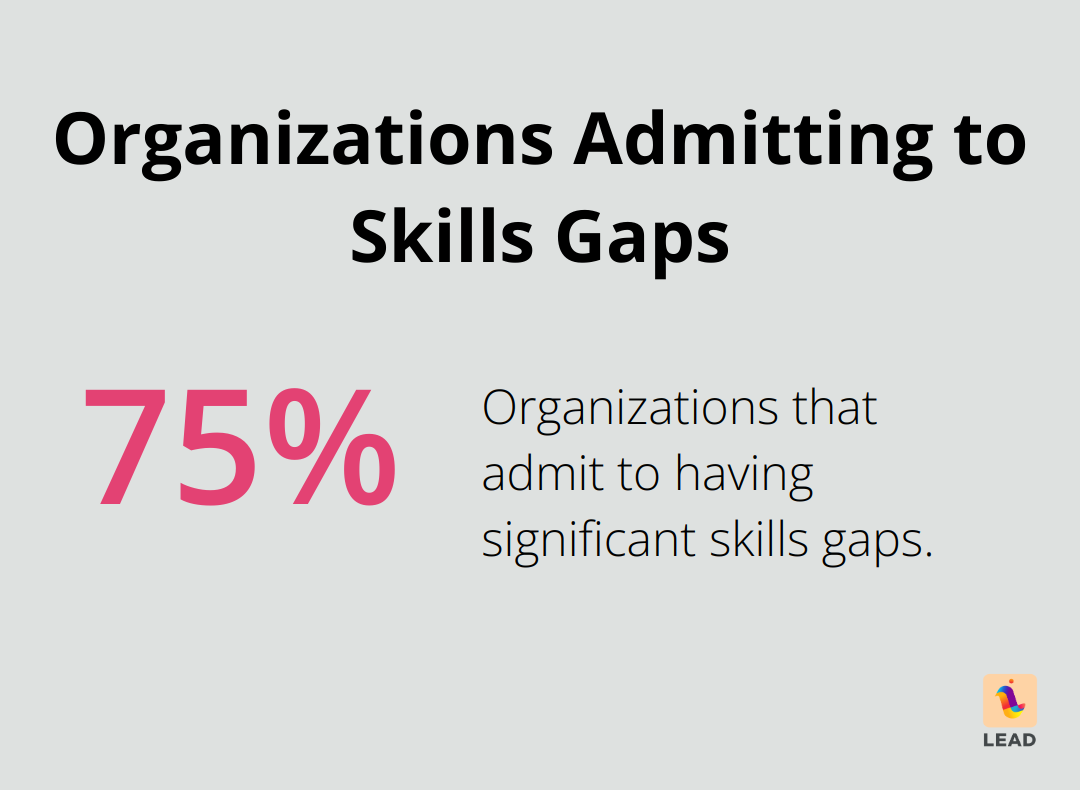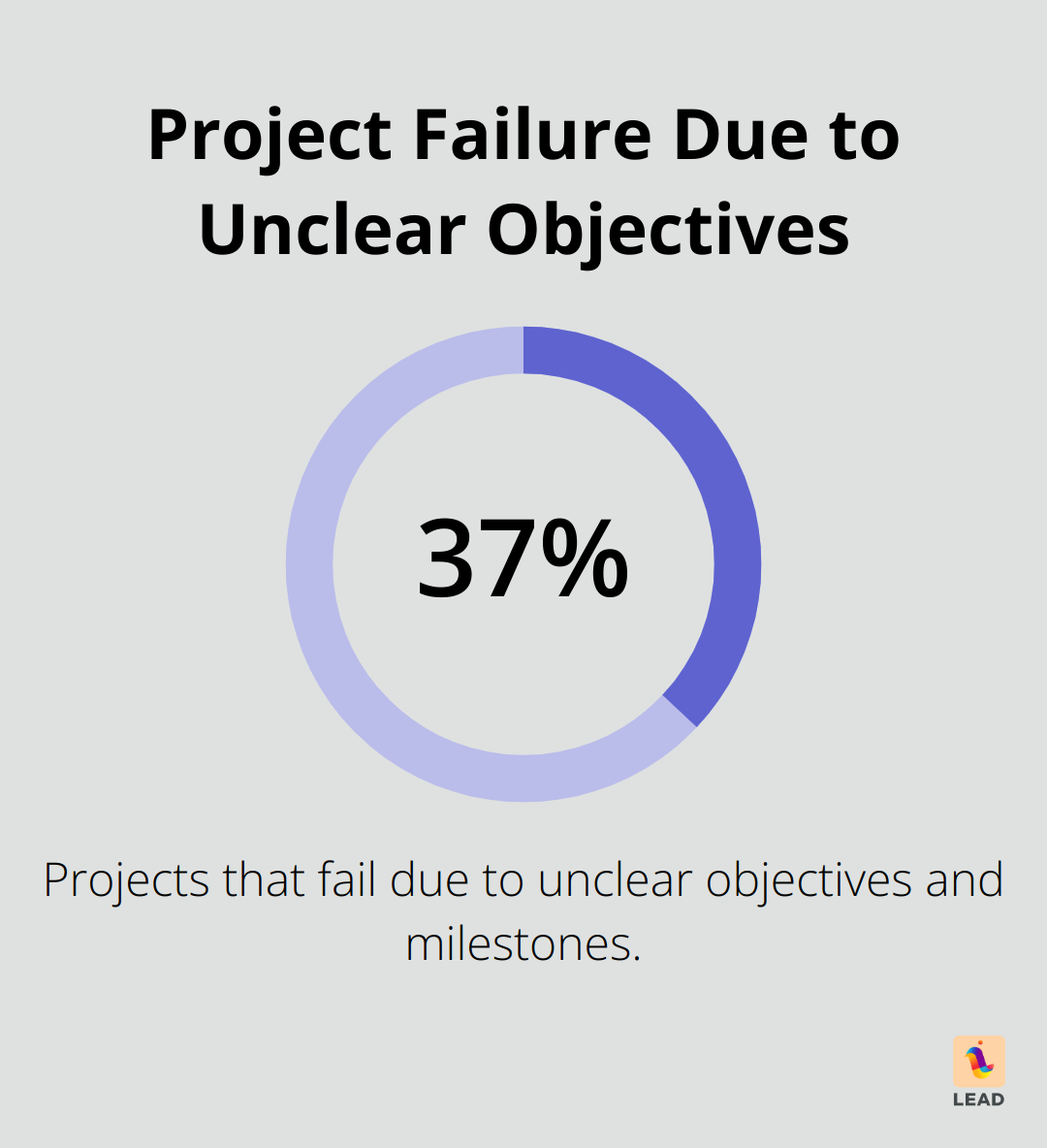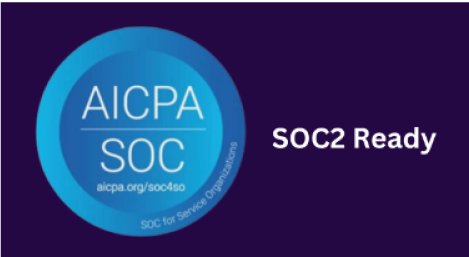Knowledge management — the unsung hero of modern organizations. It’s what drives innovation, fuels efficiency, and basically keeps the wheels from falling off. At LEAD.bot, we’ve had a front-row seat to watch how a solid knowledge management strategy can take a business from zero to hero.
So, here’s the deal: we’re gonna walk you through the art of crafting a powerhouse Knowledge Management and Strategy. We’ll break it down — the basics, the nitty-gritty of implementation, and how to know if your strategy’s a hit… or a miss. Buckle up.
What Is Knowledge Management?
The Essence of Knowledge Management
Knowledge management-the art of capturing, organizing, and distributing information within an organization. Sounds simple, right? It’s not just about storing data; it’s delivering the right info, to the right people, at the right time. The holy grail of efficiency if you ask me.
The Impact of Knowledge Sharing
Let’s talk about harnessing knowledge-knowledge management taps into the collective smarts of a company, putting it on tap for everyone. McKinsey (the oracle of management insights) found that employing social technologies can pump up productivity by 20 to 25 percent. That kind of edge… can make or break you in the big leagues.


Three Dimensions of Knowledge
Knowledge comes in three tasty flavors:
- Explicit knowledge: Documentable, shareable stuff-think instruction manuals and training videos. Easy-peasy.
- Tacit knowledge: The ninja-level insights that aren’t written down. Like a sales pro’s negotiation vibes or a coder’s sixth sense with syntax.
- Implicit knowledge: The middle sibling-it’s there, hidden in the gray area. Stuff like company culture norms or team shortcuts. Just gotta dig a little.
Tangible Benefits of Effective Knowledge Management
Pay attention, folks. This isn’t just about warm fuzzies-knowledge management pays off:
- Accelerated problem-solving: Less time chasing info equals faster fixes. Workers spend nearly 2.5 hours a day just hunting for info. Get that time back and boom, you’re scoring serious productivity points.
- Enhanced decision-making: When the info buffet is spread out before you, choices are sharper, mistakes-fewer.
- Amplified innovation: Ideas surf across teams-borderless. Deloitte says companies with stellar knowledge habits are 3.5 times more likely to nail innovation. Drop that mic.
- Streamlined employee onboarding: Newbies get up to speed, zap, like half the usual time (by some estimates).
Practical Implementation of Knowledge Management
And now, the how-to. It’s not just about flashy new software. You need a culture that screams sharing is caring.
Begin with the basics: What do your people already know? What’s crucial for your biz? Nail down how to capture and spread this gold.
Sure, tools like LEAD.bot help connect dots and plug knowledge gaps, but they’re just your launch pad. The real magic? When your team buys into the sharing game.
In the ever-spinning world of biz, knowledge management isn’t a nicety-it’s essential for staying on your toes. Tapping into your team’s collective brainpower isn’t just smart, it’s a one-way ticket to innovating and leading.
Now, let’s dig into the essentials-those core elements that’ll build your powerhouse strategy for knowledge management.
Building Your Knowledge Management Strategy
Map Your Knowledge Landscape
At LEAD.bot, we’ve seen firsthand the magic of a well-sculpted knowledge management strategy. First move? Check your inventory. Do a knowledge audit to spotlight your organization’s wealth of information-and where it’s rusting away. We’re not just talking dusty docs; we’re talking about pinpointing where the know-how is hiding in your people.
Deloitte spills the beans: 75% of organizations admit to gaping skills chasms. Want to avoid the jump-off-a-cliff moment? Map your knowledge terrain to plug those holes before they sink you.


Here’s a nugget: Dive into organizational network analysis to unearth the ties and tales among your folks, teams, and tribes. You might just trip over some mind-blowing revelations about how intel really flows in your halls.
Design Your Knowledge Capture Process
Got a grip on what you have (and what’s AWOL), time to lay down the tracks for knowledge capture and sharing. Lots of outfits stumble here, so eyes wide open.
Lay down the law with solid guidelines for jotting down processes, triumphs, and forehead-slapping lessons. The easier you make it for your crew to spill their insights, the more they’ll pour forth.
Consider a “learning after doing” ritual where teams decode the big takeaways post-project. Toss in tricks like peer assist and After Action Review and watch those project wins stack up.
Choose Your Tech Wisely
Let’s gab about the gadgetry. The right tech can either steer your knowledge ship to glory or run it aground. But surprise-more gizmos don’t equal better.
TSIA whispers that 85% of firms juggle multiple knowledge systems. That’s like herding cats. Go for a streamlined, harmonious beast that syncs with your workflow groove.
Seek out star features like knockout search power, user-friendly content building, and those snazzy analytics to watch who’s diving in. If you’re in the Slack or Microsoft Teams camp, how about a LEAD.bot that slots knowledge management right into your office chatter?
Foster a Knowledge-Sharing Culture
Here’s the scoop: even the shiniest tech won’t save you if your culture’s allergic to sharing. You’ve gotta weave it into the very fabric of your company’s being.
Kick it off by spotlighting and high-fiving the knowledge sharers. Make it shake up performance reviews. Toss a party for regular knowledge droppers.
Set the scene for cross-team learning. Those virtual coffee klatches (props to LEAD.bot) can tear down walls and spark casual wisdom swaps.
Culture revamps aren’t fly-by-night. They demand dogged effort and bigwig backing. Yet, jackpot: outfits with a vibrant knowledge-sharing vibe witness juiced-up employee efficiency.
Armed with these building blocks, you’re primed to whip up a knowledge management strategy that delivers real-deal results. It’s beyond keeping tabs on info; unleash the full brainpower of your squad. Now, let’s dive into strategizing for action and sizing up the success.
How to Put Your Knowledge Management Strategy into Action
Secure Top-Level Support
Alright, first things first – you need the big suits on your side. If the bigwigs aren’t backing you up, you’re pretty much dead in the water. Here’s a shocker: 37% of projects go belly-up because they couldn’t set clear objectives and milestones. Don’t be that sob story.


Craft a pitch that’ll make their ears perk up. It’s all about the Benjamins, folks – show ’em how this whole knowledge management gig pumps up the bottom line. Hit them with the hard numbers. No existing data? No sweat – whip up a pilot project and get your own.
Pro tip: Find yourself a C-suite superhero (someone who gets the knowledge management vibe). They’ll be your tag team partner in those high-stakes boardroom throwdowns.
Create a Detailed Roadmap
Your roadmap – it’s not just a snooze-fest to-do list. Think of it like your strategic battle plan.
Start off with some quick wins. Pick the low-hanging fruit that’ll prove you’re onto something good, fast. Get those early Ws to win over the doubters.
Break it down into phases. Maybe phase one is setting up a central brain trust, and phase two is all about rolling out those collaboration tools. Every phase? Locked, loaded, and time-stamped.
And hey, don’t launch new systems when everyone’s pulling their hair out (hello, year-end closings).
Provide Targeted Training
If your crew can’t use this stuff, you might as well pack it up now. Training isn’t a nice-to-have; it’s a gotta-have.
Ditch the cookie-cutter plans. Custom-fit those training sessions, because what works for front-line troops won’t cut it for execs. Maybe workshops for the boots on the ground, and snappy overviews for the top dogs.
Link that learning to real-world tasks. Throw challenges their way. Gift some gold stars to the folks who make it happen.
Making that rock-solid connection between learning and outcomes is how you create programs that don’t bore people to tears but actually get their gears turning.
Measure and Adapt
You can’t fix what you can’t measure. So set those Key Performance Indicators (KPIs) in stone from day one.
What should you be tracking?
- Time saved hunting for info
- Boost in cross-department banter
- Less duplicate work (no more Groundhog Day!)
Now, don’t just sit on that data – do something with it. If a tool’s collecting dust, find out why. Maybe it’s clunky or doesn’t play nice with others.
Stay nimble and ready to pivot. The biz world? Yeah, it’s got a speed problem. Your knowledge management strategy needs to keep up.
Rolling out a knowledge management strategy isn’t a one-and-done. Keep tweaking, keep evolving, and watch yourself pull ahead of the pack.
Final Thoughts
Knowledge management and strategy-let’s be real, they’re the backbone of any modern business aiming for success. Want to drive innovation and boost efficiency? You’ve got to manage your organization’s collective wisdom. It’s what gives you that serious edge in today’s breakneck-speed market. Solutions like LEAD.bot? They integrate seamlessly with existing communication platforms to facilitate knowledge exchange and zap those pesky silos out of existence.
Oh, and AI and machine learning? Buckle up. These guys are going to revolutionize how we capture, organize, and retrieve information. There’s a real trend forming here-moving towards decentralized and collaborative knowledge creation. Continuous improvement is your best friend-stay loose, keep measuring progress, and adapt.
Time to take the plunge and start implementing these strategies. Watch your organization morph into a powerhouse of shared knowledge and collaborative success. The business landscape isn’t just evolving; it’s sprinting. A solid knowledge management strategy? Not just nice to have-it’s your golden ticket.












